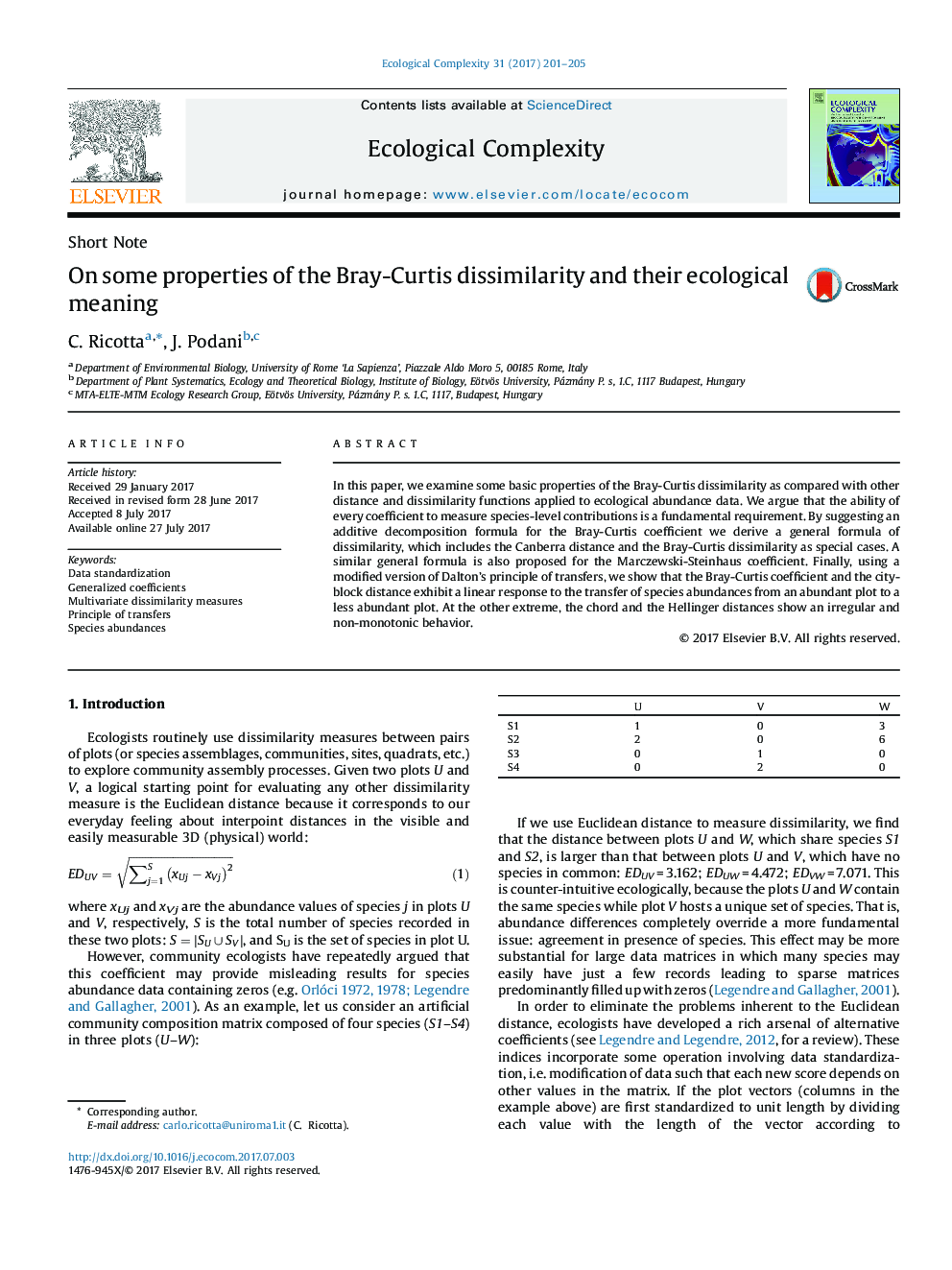| Article ID | Journal | Published Year | Pages | File Type |
|---|---|---|---|---|
| 5741273 | Ecological Complexity | 2017 | 5 Pages |
â¢We examine some basic properties of the Bray-Curtis (BC) dissimilarity.â¢We first suggest an additive decomposition formula for the BC coefficient.â¢Next we derive a general formula of dissimilarity which includes the BC dissimilarity as special case.â¢Finally we show that the BC coefficient exhibits a linear response to the transfer of species abundances from an abundant plot to a less abundant plot.
In this paper, we examine some basic properties of the Bray-Curtis dissimilarity as compared with other distance and dissimilarity functions applied to ecological abundance data. We argue that the ability of every coefficient to measure species-level contributions is a fundamental requirement. By suggesting an additive decomposition formula for the Bray-Curtis coefficient we derive a general formula of dissimilarity, which includes the Canberra distance and the Bray-Curtis dissimilarity as special cases. A similar general formula is also proposed for the Marczewski-Steinhaus coefficient. Finally, using a modified version of Dalton's principle of transfers, we show that the Bray-Curtis coefficient and the city-block distance exhibit a linear response to the transfer of species abundances from an abundant plot to a less abundant plot. At the other extreme, the chord and the Hellinger distances show an irregular and non-monotonic behavior.
